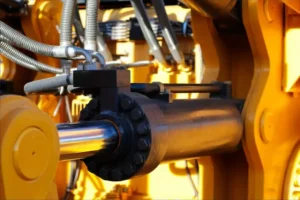What is silver
Silver is a chemical element, represented by the symbol Ag in the periodic table. It’s a lustrous, white, and shiny metal known for its various properties, such as conductivity, malleability, and ductility. It has been used for various purposes throughout history, including as currency, in jewelry and silverware, and industrial applications.
Silver is relatively rare and occurs in nature primarily in the form of ores like argentite and horn silver. It’s often extracted while mining other metals like copper, lead, and zinc.
Due to its excellent conductivity for electricity and heat, silver is used in various industries, particularly in electronics and photography. It’s also valued in medicine, as silver compounds have antimicrobial properties. Silver is highly reflective, which makes it useful in mirrors, optics, and solar panels.

Conditions for silver melting
Silver has a relatively high melting point compared to many other metals. Silver melting point is approximately 961.8 degrees Celsius (1763.2 degrees Fahrenheit). At this temperature, solid silver transforms into a liquid state.
The conditions for melting silver involve reaching and sustaining this specific high temperature. Usually, a heat source such as a furnace, torch, or other specialized equipment capable of producing temperatures above silver’s melting point is used. This enables the solid silver to absorb enough heat energy to break the intermolecular forces holding its solid structure together, allowing it to transition into a liquid form.
The boiling point of silver, which is the temperature at which silver transitions from a liquid to a gaseous state, is approximately 2,162 degrees Celsius (3,924 degrees Fahrenheit). At this temperature, the thermal energy is sufficient to overcome the forces binding the liquid silver molecules, allowing them to break away and form a gas. Silver’s boiling point is notably high, reflecting its strong metallic bonds that require significant energy to break and vaporize the metal.
Devices for silver melting
- Crucible Furnace: A commonly used device, it consists of a container (crucible) made from materials like graphite, clay, or ceramics, heated by a fuel source like gas, electricity, or charcoal. Crucible furnaces are efficient for small to medium-scale melting.
- Induction Furnace: Utilizes electromagnetic induction to generate heat directly within the metal. It’s efficient, precise, and commonly used in industrial settings for melting larger quantities of silver.
- Torches: For smaller-scale melting, torches with high-temperature flames, such as oxy-acetylene or oxy-propane torches, are used for precision work in jewelry making or small-scale metalwork.
- Kilns: Electric or gas-fired kilns with crucibles are employed for controlled and uniform melting, often used in art studios or smaller-scale industrial settings.
- Electric Melting Pots: Designed for simplicity and convenience, these devices use electricity to melt smaller quantities of silver. They are popular in workshops and small-scale applications.
- Muffle Furnaces: Often used in laboratory settings, they enclose the material being heated in a separate chamber, providing a controlled and isolated environment for melting silver or other metals.
The choice of device depends on the quantity of silver being melted, precision needed, energy efficiency, and the specific requirements of the operation. Safety measures and equipment suitable for handling high temperatures are essential when melting silver.

Applications of Molten Silver
Molten silver, in its liquid form, finds various applications across different industries due to its unique properties. Here are some of its applications:
- Jewelry Making: Molten silver is commonly used in the creation of jewelry, where artisans pour or cast the liquid silver into molds to create intricate designs for rings, necklaces, earrings, and other accessories.
- Electronics: Silver’s high thermal and electrical conductivity make it valuable in the electronics industry. It’s used in circuit boards, connectors, and contacts due to its ability to efficiently conduct electricity and manage heat.
- Photography: While digital photography has largely replaced traditional film, silver is historically important in the production of photographic films and papers. Silver’s light sensitivity allows for image capture and development in traditional photography.
- Mirrors and Optics: Silver’s reflective properties make it valuable in the production of mirrors, telescopes, and other optical instruments.
- Medicine: Silver has antimicrobial properties, and while not used in its molten form, its compounds are used in medical applications like wound dressings, catheters, and antibacterial coatings for medical devices.
- Solar Panels: Silver paste, made from molten silver, is used in the production of solar cells due to its ability to conduct electricity and its resistance to corrosion.
- Catalysis and Chemical Processes: Molten silver serves as a catalyst in various chemical processes and is used in the production of ethylene oxide and formaldehyde.
- Brazing and Soldering: Molten silver alloys are used in brazing and soldering due to their ability to join metals together.
The versatility and unique properties of molten silver make it valuable in a wide range of applications across industries, from high-tech electronics to traditional crafts like jewelry making.
Silver in History and Culture
- Currency and Trade: Throughout history, silver served as a primary form of currency. Its liquidity, durability, and scarcity made it an ideal medium of exchange, fostering trade and economic growth in many ancient civilizations.
- Wealth and Status: Silver’s rarity and intrinsic value made it a symbol of wealth and status. Elaborate silverware, jewelry, and ornaments were not only indicators of affluence but also played a role in social customs and ceremonies.
- Artisan Craftsmanship: The art of molding and shaping molten silver into intricate designs for jewelry, religious artifacts, and decorative items has been a significant part of cultural heritage. Craftsmanship in silversmithing has been revered and passed down through generations.
- Mining and Colonization: The pursuit of silver mines has influenced historical events and colonization. Regions rich in silver were often sought after by explorers and empires for their economic and strategic value.
- Mythology and Symbolism: Silver has held symbolic significance in many cultures, often associated with purity, clarity, and the divine. It features in myths and rituals, sometimes embodying spiritual significance.
The historical and cultural significance of molten silver encompasses economic, artistic, and symbolic dimensions. It has played a vital role in shaping societies, economies, and artistic expressions, leaving a lasting imprint on human history and cultural identity.

Safety Measures when Melting Silver
- Protective Gear: Wear appropriate protective gear, including heat-resistant gloves, an apron, face shield or goggles, and heat-resistant clothing to prevent burns from splashes or accidental contact with molten silver.
- Ventilation: Ensure proper ventilation in the workspace to disperse any fumes or gases released during the heating process.
- Fire Safety: Have fire extinguishing equipment nearby, as molten silver presents a fire hazard, especially in the presence of flammable materials.
- Stable Work Surface: Use a stable and heat-resistant work surface to prevent accidental spills or tipping of containers holding molten silver.
- Training and Supervision: Ensure that anyone handling molten silver is adequately trained and supervised, especially when using specialized equipment like furnaces or torches.
- Proper Handling Equipment: Use appropriate tools and equipment designed for handling molten metals, such as tongs and crucibles specifically made for high-temperature materials.
- Emergency Response Plan: Have an emergency response plan in place, including procedures for burns or accidents, and ensure everyone involved is familiar with these protocols.
- Precautions for Solidification: Be cautious of the solidification process. Molten silver solidifies rapidly upon cooling and can cause severe burns if it comes into contact with skin.
- First Aid Knowledge: Those working with molten silver should have basic first aid knowledge for treating burns or injuries, including how to manage contact with hot metals.
By adhering to these safety measures, the risks associated with handling molten silver can be minimized, ensuring a safer working environment for those involved in its production or use.
Melting Silver and Modern Technology
- Electronics: Silver’s exceptional conductivity is vital in electronics. It’s used in circuits, coatings, and contacts within electronic devices, ensuring efficient transmission of electricity and heat management.
- Photovoltaic Technology: Silver paste, created from molten silver, is used in the production of solar cells. It forms the conductive lines on solar panels, facilitating the movement of electrical current generated by sunlight.
- Batteries: Silver’s conductive properties are valuable in the production of batteries, aiding in efficient energy storage and discharge.
- Catalysis and Chemical Processes: Molten silver is employed as a catalyst in various chemical processes, enhancing the efficiency of reactions in industries like pharmaceuticals and petrochemicals.
- Antimicrobial Coatings: Silver nanoparticles, derived from molten silver, are used in creating antimicrobial coatings for medical devices and surfaces, aiding in infection control.
- Reflective Coatings and Optics: Silver’s reflective properties make it suitable for optical mirrors and coatings used in telescopes and other optical instruments.
- Nanotechnology: Silver nanoparticles derived from molten silver have applications in nanotechnology, contributing to advancements in various fields such as medicine, electronics, and materials science.
Melting silver’s conductivity, reflectivity, and other unique characteristics make it a valuable component in various cutting-edge technological advancements, from enhancing electrical efficiency in electronics to contributing to innovative medical applications and renewable energy technologies.

The Role of Molten Silver in Metallurgy
- Ore Refinement: In metallurgical processes, molten silver is involved in the refining of silver ores. The raw silver extracted from ore often contains impurities. Molten silver is treated using various methods to separate and remove these impurities, refining it to a purer form.
- Alloy Formation: Silver is frequently alloyed with other metals to enhance its properties. Molten silver is combined with metals like copper, gold, or palladium to create alloys suitable for specific applications. For instance, sterling silver, an alloy of silver containing a percentage of copper, is widely used in jewelry making.
- Casting and Molding: Molten silver is used in casting and molding processes to create various silver products, from intricate jewelry designs to industrial components. It’s poured or injected into molds to achieve specific shapes and forms.
- Heat Treatment: Molten silver is used in heat treatment processes in metallurgy. This involves subjecting metals to controlled heating and cooling to alter their physical and mechanical properties, often enhancing their strength or hardness.
- Soldering and Joining: Molten silver alloys are employed in soldering and joining different metal parts together due to their ability to form strong and durable bonds.
Molten silver’s malleability and ability to form alloys with other metals make it a crucial element in metallurgical processes, allowing for the production of various refined silver products and the enhancement of other metal properties for diverse applications.








